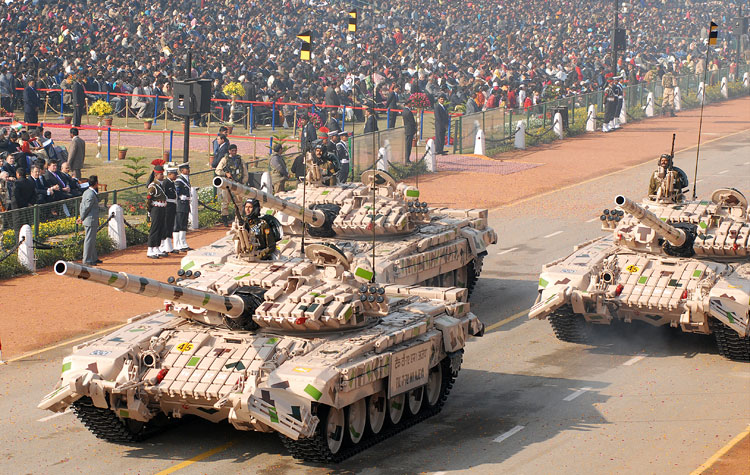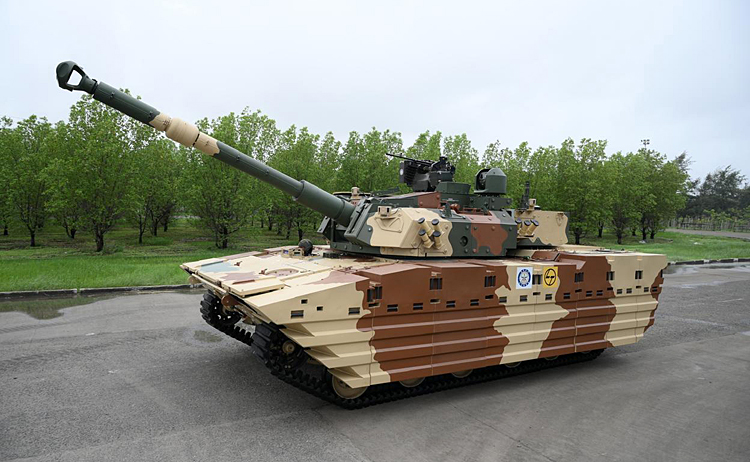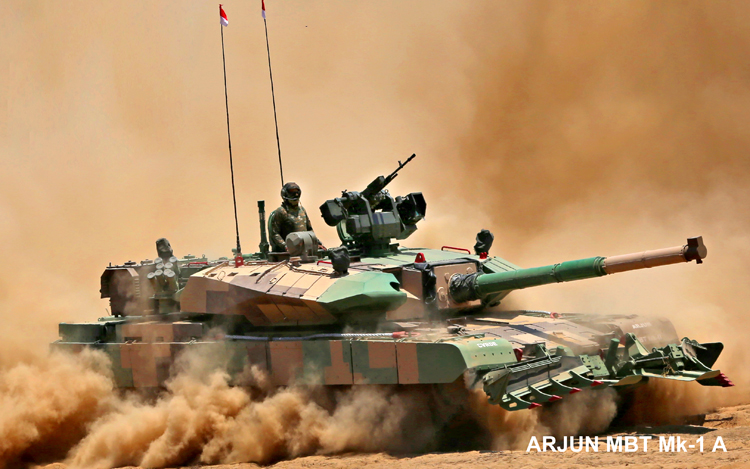INDIAN ARMED FORCES CHIEFS ON OUR RELENTLESS AND FOCUSED PUBLISHING EFFORTS

The insightful articles, inspiring narrations and analytical perspectives presented by the Editorial Team, establish an alluring connect with the reader. My compliments and best wishes to SP Guide Publications.

"Over the past 60 years, the growth of SP Guide Publications has mirrored the rising stature of Indian Navy. Its well-researched and informative magazines on Defence and Aerospace sector have served to shape an educated opinion of our military personnel, policy makers and the public alike. I wish SP's Publication team continued success, fair winds and following seas in all future endeavour!"

Since, its inception in 1964, SP Guide Publications has consistently demonstrated commitment to high-quality journalism in the aerospace and defence sectors, earning a well-deserved reputation as Asia's largest media house in this domain. I wish SP Guide Publications continued success in its pursuit of excellence.
- Operation Sindoor: Resolute yet Restrained
- India’s Operation Sindoor Sends a Clear Message to Terror and the World – ‘ZERO TOLERANCE’
- Japan and India set forth a defence cooperation consultancy framework, talks on tank and jet engines
- Terrorist Attack in Pahalgam in Kashmir: Unfolding a long surgical war against PAK
- Lt General Pratik Sharma takes over Command of Indian Army's Northern Command
Future Ready Combat Vehicle
The FRCV programme is critical for modernising the Indian Army’s armoured fleet, with a design that must incorporate technologies adaptable for the next 35-40 years.
 |
The Author is Former Director General of Information Systems and A Special Forces Veteran, Indian Army |

Together with the news that the Indian Army is likely to phase out its fleet of about 2,500 T-72 ‘Ajeya’ tanks, it was also reported that the Army is focusing on the Future Ready Combat Vehicle (FRCV). It was also reported in these columns recently that India is set to modernise and export its older T-72 tanks; the plan is to upgrade these tanks domestically and offer them to foreign buyers. Despite their age, these tanks are still considered highly reliable and continue to be in demand globally especially since countries in Africa, the Middle East, and Far East Asia have expressed interest in acquiring the T-72. India has already bagged a deal for exporting 400 Wheeled Armoured Platform (WhAP) to Morocco, which has been jointly developed by Tata Advanced Systems Limited (TASL) and the Defence Research and Development Organisation (DRDO).
The Indian Army is preparing to phase out its aging fleet of around 2,500 T-72 ‘Ajeya’ tanks, focusing on the development of the Future Ready Combat Vehicle (FRCV) to replace them by 2030.
According to news reports of September 28, 2024, the Indian Army is getting ready to evaluate companies vying to build the FRCV under the ‘Make in India’ initiative. The FRCV is a critical program aimed at replacing the aging T-72 Main Battle Tanks (MBTs) by 2030. The Acceptance of Necessity (AoN) has already been issued for the procurement of 1,700 FRCVs, the competition is expected to be fierce, attracting both domestic and international players.
The evaluation will involve rigorous trials to assess the performance and capabilities of the proposed FRCV designs. The DRDO's own Next Generation Main Battle Tank (NGMBT) will also be a contender in this competition. Importantly, the evaluation process will also entail a special audit to be conducted by the Indian Army and DRDO. This audit will focus on ensuring adherence to the government's ‘Make in India’ initiative by verifying the percentage of indigenous content of each proposed entry. This step is crucial to prevent the submission of rebranded foreign Main Battle Tanks (MBTs) and to promote the growth of India's indigenous defence industry.

The selection process will prioritise genuine interest and commitment to the "Make in India" initiative, ensuring that the chosen FRCV is truly a product of Indian manufacturing and contributes to the country's self-reliance in defence technology. While international companies are expected to participate, they will need to demonstrate a strong commitment to manufacturing the FRCV in India, even at the prototype stage. This will likely involve partnering with indigenous private defence sector firms like Mahindra, Kalyani Group, Tata Systems and even Larsen & Toubro (L&T), who are considered major contenders in the FRCV programme.
The Acceptance of Necessity (AoN) has been issued for the procurement of 1,700 FRCVs, with the evaluation process expected to involve rigorous trials and an audit to ensure compliance with the ‘Make in India’ initiative.
In addition to the T-72 tanks and their upgraded variants like the T-72 Combat Improved Ajeya (CIA) Mk-1 and Mk-2, the Army operates more than 1,200 T-90 tanks, bought from Russia in various batches, and 124 Made-in-India Arjun Mk-1 tanks, with an additional 118 upgraded Arjun Mk-1A tanks on order. In addition, the Army is also looking to buy another 350 Zorawar light tanks, weighing close to 25 tonnes, for use in the mountains of Ladakh and North-Sikkim, against China.
The FRCV programme represents a significant step in modernising the Indian Army's armoured fleet and ensuring its preparedness for future challenges. The outcome of the bidding process will have a lasting impact on the Indian defence landscape, shaping the future of its main battle tank fleet and its ability to meet evolving security threats. The Army hopes that the FRCV will be its tank of the future that will incorporate technologies that will keep it relevant for the next 35-40 years. They also anticipate that the FRCV will have upgrade potential to adapt to the ever-changing battlefield.
International companies participating in the FRCV competition will need to demonstrate a strong commitment to manufacturing in India, likely through partnerships with local defence firms
All these requirements make the FRCV no doubt an ambitious process, especially given the target of 2030. However, there is no reason that the project is allowed to be bogged down and delayed like the Arjun Tank, which took an inordinately long time before receiving orders for a mere 124 Arjun Mk-1 and an additional 118 upgraded Arjun Mk-1A. The deliveries of the 118 upgraded Arjun Mk-1A will also undergo further delay since the diesel engine used in these tanks has reportedly gone out of production. How have we really landed ourselves in such a state – lack of coordination or lackadaisical complacency?

Ideally, the FRCV should be 100 per cent indigenous or with a minimum foreign percentage – say 10-15 per cent. This is to ensure that bidders do not use local fasteners and other 'C' category items to qualify for 60-70 per cent local content in terms of number of total items instead of in terms of value. There is also a suggestion that the DRDO should ‘not’ be part of the audit, since it is also a responder to the AoN. There is definite merit in this for cutting out avoidable bias. Finally, we need to reduce the proverbial red tape to the very minimum. The FRCV is an essential requirement looking at the increasing threats to India’s security.





